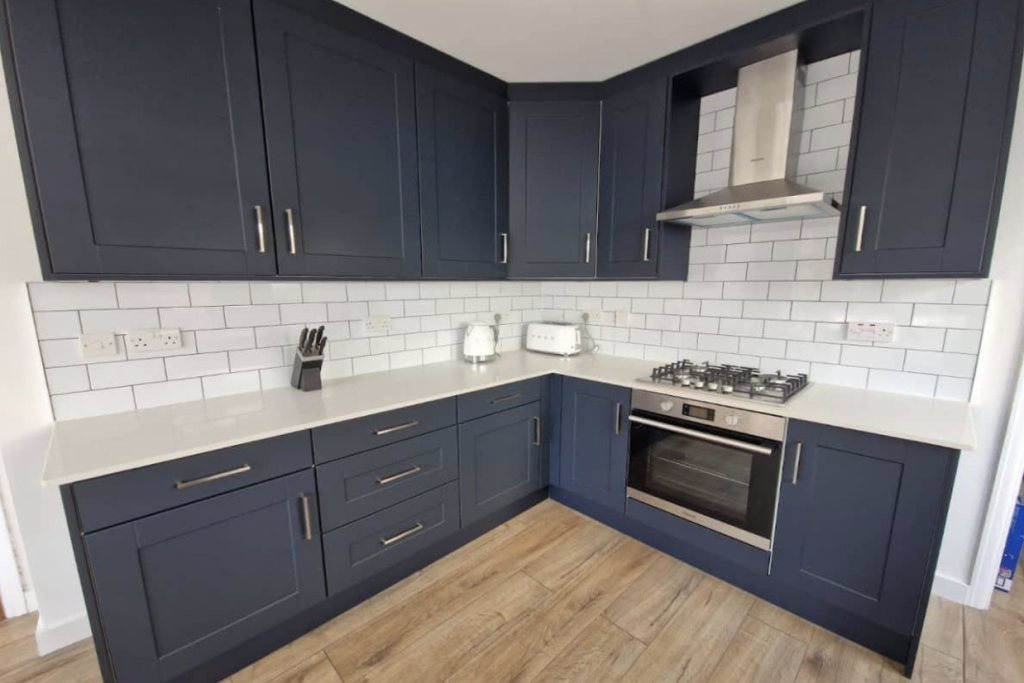A home remodel isn’t just about aesthetics—it’s an investment. Whether you’re looking to sell or just want to enhance your living space, making the right upgrades can significantly boost your home’s value. But not all renovations deliver the same return. Some projects can add tens of thousands to your property’s worth, while others might not make much difference.
So, how do you remodel smartly? The key is knowing where to focus your efforts. Some upgrades—like flooring, kitchens, and energy efficiency—can bring substantial value. Others, like adding smart home features or improving curb appeal, make your home more desirable without breaking the bank. Here’s how to do it strategically.
Upgrade Your Floors – A High-Impact Transformation
One of the most noticeable upgrades in any home is the flooring. Walk into a space with outdated carpets or cheap laminate, and the entire house feels tired. But replace that with high-quality hardwood, luxury vinyl, or polished tile, and suddenly, everything looks modern and well-maintained.
Hardwood remains one of the most desirable choices for buyers when it comes to flooring services, offering durability and a timeless appearance. Even if solid wood isn’t in the budget, engineered hardwood or high-end vinyl planks provide a similar aesthetic at a lower cost. The key is choosing materials that complement your home’s overall style while ensuring durability and ease of maintenance.
And don’t forget about consistency. Choppy transitions from one flooring type to another can make a space feel disjointed. If possible, keep the same material throughout the main living areas for a seamless look.
The Kitchen: Where Small Changes Make a Big Difference
You don’t need a full-scale kitchen remodel to boost your home’s value. Even smaller, strategic updates can transform the space and make it far more appealing.
Start with the cabinets. If they’re structurally sound but look outdated, refinishing or repainting them can work wonders. Pair this with modern hardware—sleek black, brushed brass, or matte finishes can instantly elevate the design.
Countertops are another major factor. If yours are outdated laminate, upgrading to quartz or granite creates a high-end look that appeals to buyers. Stainless steel or energy-efficient appliances are also smart investments, offering both aesthetic appeal and long-term savings.
But sometimes, it’s the simplest upgrades that make the most impact. Swapping outdated light fixtures, upgrading to a stylish backsplash, or even adding a fresh coat of paint can completely change the feel of the space.
Bathrooms: A Modern, Functional Upgrade
A dated bathroom can make an entire home feel older than it is. If yours still has a bulky tub, old-school tiles, or dull lighting, it might be time for an upgrade.
Focus on elements that make the space feel modern and spa-like. Frameless glass showers, updated vanities with plenty of storage, and sleek fixtures can completely transform the room. If you’re not doing a full remodel, simple changes like a new mirror, contemporary lighting, or high-end faucets can still make a noticeable impact.
Don’t forget efficiency—low-flow toilets, water-saving showerheads, and LED vanity lights add value and appeal to buyers looking for long-term cost savings.
Curb Appeal: First Impressions Matter
Before anyone even steps inside your home, they’ve already formed an opinion. That’s why curb appeal is so important. A fresh coat of paint on the front door, neatly trimmed landscaping, and updated exterior lighting can make a massive difference in how your home is perceived.
If your budget allows, consider a bigger upgrade like replacing an old garage door or updating the driveway. These are high-ROI changes that not only enhance aesthetics but also improve functionality.
Sometimes, it’s the simplest things—fresh mulch, colorful flowers, and a well-maintained lawn—that create the best first impression.
Maximising Space: Make Every Square Foot Count
Unused or awkward spaces can make a home feel smaller than it actually is. If you have a basement sitting empty or an attic gathering dust, turning them into functional living areas can add major value.
Finished basements can serve as entertainment spaces, home offices, or even guest suites. Attics, when properly insulated and designed, make for great additional bedrooms or workspaces. Even small changes—like built-in storage, under-stair nooks, or a more open floor plan—can make a home feel more spacious and functional.
If knocking down walls isn’t an option, using mirrors, lighter paint colors, and strategic furniture placement can also help create a more open feel.
Energy Efficiency: The Modern Selling Point
Homebuyers today aren’t just looking for style—they want efficiency. High energy bills can be a dealbreaker, so adding energy-saving upgrades can make your home more attractive to buyers.
Start with the basics: better insulation, energy-efficient windows, and smart thermostats. These upgrades not only lower utility costs but also improve comfort. Solar panels are another strong investment if you plan to stay in your home long enough to see the return.
If you’re making smaller changes, switching to LED lighting, upgrading old appliances, and sealing any drafts around doors and windows can still have a noticeable impact.
Outdoor Living: Extend Your Home Beyond the Walls
More than ever, buyers appreciate outdoor spaces that feel like extensions of the home. A well-designed deck, patio, or even a simple seating area can add significant value.
Adding a pergola, fire pit, or outdoor kitchen makes your backyard a true gathering place. Even if a full patio renovation isn’t in the cards, refreshing your outdoor furniture, installing better lighting, or adding potted plants can create an inviting atmosphere.
The more functional and attractive your outdoor space, the more desirable your home becomes.
The Final Takeaway: Focus on High-Impact Upgrades
Not all remodels are created equal. If you’re looking to increase your home’s value, focus on upgrades that have the biggest impact: flooring, kitchens, bathrooms, energy efficiency, and outdoor spaces.
You don’t need a massive budget to see results. Even small, strategic changes—like refinishing cabinets, upgrading light fixtures, or improving curb appeal—can go a long way in making your home feel more valuable and desirable.
At the end of the day, the goal is to create a home that’s not just worth more on paper, but also more enjoyable to live in. Whether you plan to sell or stay for years to come, investing in the right improvements ensures you get the best return—both financially and in everyday comfort.



